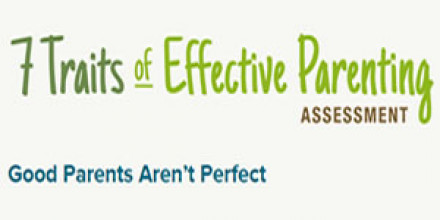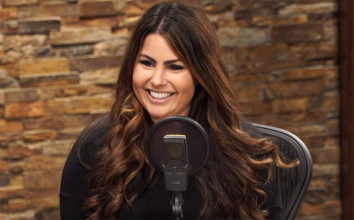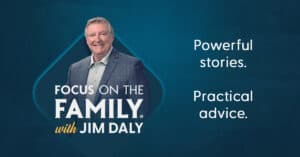John Fuller: This is John Fuller along with Jim Daly and we wanted to take just a moment to thank you for listening to Focus on the Family.
Jim Daly: That’s right, John. We know life is a bit crazy right now but let me remind all of us the words Jesus gave us in John 14:27. He said, “Peace I leave with you; my peace I give to you. Not as the world gives do, I give to you. Let not your hearts be troubled, neither let them be afraid.” And you know, as believers, we have hope. In this time of unrest, it’s important for you to be there for your family. And we want you to know, we’re here for you too. While many on our staff are working from home, our phone lines are still open. We also have many resources online to help you and your family navigate the current situation. And our regular broadcast content will continue so we can provide hope and answers for your family’s situation.
John: Find the help you need today at focusonthefamily.com or call 1-800, the letter A, and the word FAMILY.
Jim: In the meantime, please join us in asking for the Lord’s blessing and favor on our nation and literally around the world. And especially for those directly impacted by this pandemic. And remember, take a deep breath, be considerate of others, and help them as you can. Love on your family – your neighbor. And remember to pray. We serve a powerful, loving, and merciful God and we’re going to get through this. And from all of us here at Focus on the Family, thank you for praying for us.
Excerpt:
Dr. John Trent: Man, if you want to get a bunch of friends, I can’t even tell you how important this is for people that are feeling like they don’t have friends, OK. So, I’m going to go see, “Lord, what can I do today to add softness or strength to somebody who needs it? To step in and help them if they’re struggling, or to really affirm ’em?”
End of Excerpt
John F.: What if you could learn some basic information about personality types and you could use that information to improve the relationships around you? Well, we have Dr. John Trent here to help you do just that. This is Focus on the Family. We’ll be talking about his book, The Two Sides of Love. Your host is Focus president Jim Daly, and I’m John Fuller.
Jim: Hey, John, I’m looking forward to this discussion, because Dr. John Trent always has such great insights and fun.
John F.: Yeah.
Jim: He’s a fun guy to be with. And he’s going to open our eyes up to how to improve those relationships around you. He first wrote about The Two Sides of Love in 1990 with the late Gary Smalley. And of course, Gary’s son, Greg, is here on staff running our marriage area. The book’s been newly updated. And, uh, we are grateful for the partnership with John. And John, it is great to have you back here at Focus.
John T.: Hey, thank you. What an honor to be with both of you. Thank you.
Jim: All right, let’s reach back in the time capsule. Where did that idea come from, The Two Sides of Love?
John T.: Yeah, you know, it’s interesting. The book has been out for a while, but there’s a whole generation that have never heard of it, you know, The Two Sides of Love…
Jim: You know what that means? It means we’re getting old.
(Laughter)
John T.: …But, um – but really and truly, this is a book about loneliness in a lot of ways. In the standpoint that – you know the stats – I mean, in the last seven years, you know, the suicide rate for adults is up 34%.
Jim: Amazing
John T.: It’s up almost 70% for adolescents. A recent study that just came out was, you know, 10 years ago the average person said they had three, sometimes four, really good friends. Now it’s one, if that.
John F.: Hmm.
John T.: You know, but there’s still this deep need for relationships. But it’s almost like, well, wait a minute, we’re not doing it. And, I mean, the top shows are these TV shows where you get, you know, a bunch of people kind of like “Psych” and “Monk” and, you know, there’re these people that don’t – kind of don’t like each other, and then over the show they get to be best friends. And you’re like, why can’t I do that? Or in a marriage, you know, how can I – you know, so many of us, we get married and, man, we think this is going to be awesome. And these differences just beat us down. So that’s what we’ll really get to. You know, the book, The Two Sides of Love, is, uh, really going to be a fun way, I think, to talk about, you know, how do we – how to be relational. But where this all began was, I’m in my doctoral program, OK? And I’m working trying to help this couple, and they’re in huge trouble. And, um, do you know what clinicals are? Used to be we’d get cassette tapes. Now I just finished five years at Moody teaching, you know, teaching counselors. And now I teach it at Phoenix Seminary and Dallas Seminary this year. And now you use video cameras – right? And high-tech stuff. But this was a cassette tape. So, picture – there’s eight doctoral students. There’s this professor, middle-aged guy, losing his hair, wearing a sweater.
Jim: (Laughter)
John T.: And I’m playing this tape of this couple, and I know I wasn’t helping…
John F.: So, you recorded the counseling session and you’re having it review?
John T.: Well, with your permission. Yeah, you’re having it reviewed. You’ve got these other doctor – and they’re supposed to listen to you and then offer suggestions, right? Here’s what happens – OK? And this is where the whole book came from is, I’m sitting there, and I knew I wasn’t helping them a lot, you know? And they had so many differences. I mean, the only thing they had in common is they were both married on the same day.
Jim: (Laughter) Right, OK.
John T.: You know what I mean? And just very different. And those differences were so just, you know, killing them. Well, I’m playing the tape, and I’m thinking I’m doing a pretty good job. Well, he gets up from where he’s sitting up. He stands up right in the middle of the deal and he walks around. And the cassette tape’s right in front of me – OK? – the – the player.
Jim: The player, yeah.
John T.: OK, and he slams his hand down on the cassette player, which stops the player, you know? And I jump back. And everybody’s, you know, and he goes, “You will never help this couple! Never!” You know, and I’m just sitting there – I’m a student, you know? I’m, like, you know, he’s never been this way. He’s never been real dramatic. And he goes, “Do you know why?” And I go, “Well, no.” “Unless you can help him access his soft side and help her access her hard side, they will never move. If you don’t help this couple bend, they’re going to break apart.” And then he leaves.
John F.: Hmm. Wow.
Jim: That’s pretty dramatic.
John T.: I know. And – and these other students, you know, we’re like… And then we realized he’s not coming back (laughter). And so, they all leave. Nobody says anything to me. I didn’t want to say anything to anybody. But I remember walking out and driving home, and I’m thinking, gosh, did I just flunk the test or whatever, you know?
Jim: (Laughter)
John T.: The point is – is I began to think about it and pray about it and all of a sudden look at that the reality is – is, oh, my goodness, guess what real love is?
Jim: Yeah.
John T.: It’s getting to love like Jesus. And when Jesus loves us, he does that with kind of this soft side and there’s softness and strength, softness and strength. And so, we’ll get into some of that.
Jim: Well, let’s do it. I mean, that’s what we’re here to do. And I think that goes back to a classic comparison that you have on personality types.
John T.: Yeah.
Jim: And we want to get into that.
John T.: Yeah.
Jim: You say there are a number of animal types, if I remember correctly. You did the beaver, the otter, the gold…yeah.
John T.: Yeah, all that stuff, yeah. Well, picture -um, so, you know, as I’m thinking about, I got to help this couple – right? And they’re stuck and hurting. So, the first thing is, is I wanted them to – to realize, man, the more you look at Jesus, the more you’re able to look at His love, the more you see, you know He’s the Lion of Judah and the Lamb of God. But the problem was for both of them, they were just stuck, right? One of them was at the North Pole, one of them was at the South Pole. And it was because basically they had moved to such an extreme. He had become all hard side, thinking, “Well, I’m so ticked.” She’d become softer and softer, thinking, “Well, if I get softer, that’s going to change him.” But it wasn’t. And now they’re stuck. And there’s no growth. And so, first thing is, man, you know, help them understand who Jesus is. But then the second thing is, is help them understand, well, who are they? Who are their strengths? And that’s where we came up with this personality deal.
Jim: Well, let’s hit those types.
John T.: Yeah.
Jim: Because people are listening, and I’m sure they’re thinking, where do I fall?
John T.: Yeah.
Jim: But I think it’s pretty self-explanatory. You don’t really need to take a test at all.
John T.: Well, it is. Well, no, we have this really cool test in the book that you can go online and find out. But picture this. So, there’s – there’s – some of us are what we call lions. And I brought some animals in here. People can’t see these.
John F.: Well, the YouTube…
Jim: The YouTube can…
John F.: …they’re watching this, so that’s good.
John T.: But there’s these lions, and these are the people that are take charge, assertive, charge up the hill.
John F.: And you can tell just by the way you’re kind of asserting that lion physically right there.
John T.: Yes. Yeah, and if you have a lion child, they’re the ones that are letting you live at home. You know what I mean?
John F.: Hmm. (Laughter)
John T.: They’re – they’re the boss, you know. But they’re really good giving at – at giving what side of love? The hard side of love.
Jim: Right.
John T.: Really good at that, right? And then there’s the group of people that are what we call beavers. Guess what’s on the class ring at MIT? A beaver.
Jim: Right.
John F.: Really?
John T.: Guess what’s on the class ring at Caltech? A beaver. Because they’re like God’s little architects. They’re detailed. And they’re precise. And they balance the checkbook, you know?
Jim: (Laughter)
John T.: And they want the string to go, you know, they have a string going down with a ball because when you park the car, it’s got to go right there. Back up! Back up! Back up! Right there!
(Laughter)
John T.: So – but they’re real, what? Real strong.
John F.: Right.
John T.: But they’re doing it from a different place, right? These people, it’s force of character. The lions. OK, “Hey!” And these people, the beavers, are really good at, what? You know, “Hey! This is the right way.” And what happens if you’re a lion-beaver, or a beaver-lion?
Jim: You’re all hard side.
John T.: “Hey! There’s a right way, and it’s my way,” you know?
Jim: (Laughter)
John T.: And that’s the way this guy was I was working with. He was all hard side, OK? So, picture that. So, there’s lions, there’s the detail, organized, precise, follow through people. And then there’s two personality types that are really good at giving what? The soft side of love. So, one of them is the otters. I mean, they’re fun-loving, enthusiastic. They don’t balance the checkbook. They just switch banks, basically, you know.
(Laughter)
Jim: Have you done that?
John F.: I’ve done that.
Jim: OK, good.
John F.: Years ago.
John T.: They know thousands of people. They just don’t know anybody’s name, which is why they call everybody bro. “Hey, bro,” you know? “Sweetheart. Hey, sweetheart.”
(Laughter)
John T.: And they have to pollinate the whole room, you know? But it’s relationships, relationships. You know, oh, we can get along, you know? And – but they communicate a lot of connection, a lot of softness. Well, wait a minute, there’s also the golden retrievers. And they’re awesome. I mean, if you have a golden retriever, these are the kids that send themselves to timeout, OK?
Jim: Exactly.
John T.: Lions send you to timeout and you better like it, you know? But the golden retrievers are sensitive. They’re carrying. They’re compassionate…
John F.: Loyal.
John T.: …Loyal. They’re awesome. They can be great leaders. I did a deal for the 82nd Airborne. It was all sergeants, you know. So, you’d think, all right, 82nd Airborne, Ranger tab, blouse boots, tip of the spear. You’re thinking they’re all going to be, what? Lions charge up the hill.
Jim: Absolutely.
John T.: No, these are sergeants, OK? Wasn’t the – all of the officers were lion, but guess what? All but two of them were golden retrievers.
Jim: Is that right?
John T.: That’s because what? I’m going to execute the mission, but I’m going to try to do my best to get everybody back home.
Jim: Take care of everybody.
John T.: Yeah. And so, they’re great at team building. But what happens when you’re Jim Daly…
Jim: (Laughter)
John T.: …And you’ve got a lot of golden retriever, but you have a lot of otter and lion because everybody’s kind of a mix of these, do you see what I mean?
Jim: Well, I had the ball in the garage, but it fell off the string, I haven’t replaced it yet. So, what does that say about me? I don’t know.
John T.: (Laughter)
John F.: I have to admit the same thing!
John T.: Oh, that’s not good.
Jim: I’ve got – I’m sitting here the whole time thinking, I got to put that ball back up.
John F.: You can let go of the details, John.
Jim: Should I let go of that?
John T.: Yeah. And John does such a great job of just being able to communicate, again, warmth. But, man, he moves things along, you know? We got to get this thing done. So – so those are the four person – lions, otters, golden retrievers, and beavers. But they really – you know, when you look at it, man, we need to learn how to blend differences but also how to bend. And that’s what the book’s all about.
Jim: Well, the obvious question, too, is where was Jesus in this? What was his type?
John T.: Yeah. Well, if you really think about it, I mean, again, He’s the Lion of Judah and He’s the Lamb of God.
John F.: Hmm.
John T.: And so, he’s able to… remember the woman that comes up and just touches the hem of his garment?
John F.: Yeah.
John T.: And He’s so alert and aware of things. But He’s also able to say when Peter says, “Oh, wait a minute, don’t go to the cross, you know, you don’t need to go there,” and He says, what? You know, “Get behind me Satan,” and He – so He’s able to confront and – and correct. And that’s what I’m getting about that. So, remember I’m working with this couple that’s getting nowhere. So, they need to look at Jesus, because He’s able to add strength and sensitivity, right? They need to understand their strengths. That’s No. 2, you know. Um, it says God – First Corinthians – God has placed us in the body right where we’re supposed to be. But the problem for so many of us is even if we understand our strengths, a lot of times we can end up, you know, not really valuing the other person. And so, that’s really kind of the third thing that I had to do, is I had to get them to bend, you know? And we’ll talk about that.
Jim: You, in fact – yeah, you use that analogy of architects…
John T.: Yeah…yeah.
Jim: …You know, big buildings, tall buildings. They put sway. Speak to that.
John T.: Well, you know, that’s a great point. You know, architectural experts, what they do is with these huge buildings… So, I worked at Moody in Chicago for five years. And right out my office window I’m looking at the old Sears Tower, which is now called Willis Tower.
Jim: Right.
John T.: Well, it’s built so that it bends three feet from center at the top.
Jim: OK, that would freak me out. I’m never going to the top of that building again.
John F.: Oh, my word.
(Laughter)
John T.: Well, think about this. In California, all the buildings have to be built with this huge amount of sway. Now, it comes from the top with the wind in Chicago. But they’re all building it in the bottom up in LA, because of earthquakes. But whether it’s bottom up… And so, with this couple, what I’m getting at is what they were unwilling to do was, “Hey, it’s my way or the highway.” And, and so when you can all of a sudden begin to help people realize, man, you know, this person that’s so different than me can really, uh, make a huge difference – can I give you a quick example? OK, Cindy and I are real different, you know? And I’m getting ready to buy a car just a little bit ago. So, my… what I normally do is I walk on the car lot and I say, “Hey, just take advantage of me and, you know, charge me as much as you want, and I suck at this.”
Jim: Give me the worst car on the lot (laughter).
John T.: Well, I know what car I want, but I know I’m gonna get taken, right? Well, Cindy is a beaver-retriever, my wife. You know, she’s real sensitive, but she’s a great negotiator. So, she calls me as I’m driving there, and she goes, “Now, you’re going to walk out at least once, aren’t you?” And I go, “Oh, yeah, I forget that part,” you know?
Jim: (Laughter)
John T.: And then she goes, “Now, come on. I’m going to ask you.” So, I walk in. And I mean, I get the car at such a good price – I mean, I’m sure I was still taken. But the point is – is that, um, you know, it used to bug me like crazy that Cindy would ask me all these questions, you know? ‘Cause beavers ask tons of questions.
Jim: Right.
John T.: And, and, you know, she wanted me to do things right and by the book and, oh, man, you know, just – let’s just switch banks. We don’t have to balance the checkbook, you know. But the more I’ve looked at her… See, when you bend, you change your position, you know, on how you look at people. And so, that’s really one of the things that I started to do with this couple, is just say,” Now, look; you know, doesn’t have to be 180 degrees. But what’s one way you can add softness to the guy? You know, what’s one way you can add softness?” And guess what I’m telling you? What broke apart things for them is he would start opening the car door for his wife.
John F.: Aha.
John T.: Or if they went to a restaurant, he’d pull out the – and it just – I said, “Just – you got to do one small thing that shows that you value her, that shows softness.” And then with her, I go, “You have to stand up and say something.” So, she’d say, “Well, we need to talk about something. How about if we talk?” – instead of just sitting back. Do you see – so we go through ten ways in this book. How do you get stronger? How do you get softer? But it begins with being – I mean, neither of you deal with pride, right? I mean, neither of you…
Jim: Yeah, right (laughter).
John T.: …struggle with bending, right?
Jim: Yeah.
John F.: Well, I think we would, uh, all say we have to struggle with pride at some point.
John T.: Yeah.
John F.: So, I appreciate that, though, John.
John T.: Yeah.
John F.: John Trent is our guest on Focus on the Family and the book, The Two Sides of Love, is newly revised and updated. And we’ll encourage you to get a copy at focusonthefamily.com/broadcast or call us for details. And while you’re at it, make sure you get a copy of this broadcast. 1-800, the letter A, and the word FAMILY. 800-232-6459.
Jim: John, Cindy, your wife, and Jean, my wife, sound very similar.
John T.: Yeah, yeah.
Jim: Beaver and…
John T.: Bless their hearts, yeah.
Jim: …Yeah. Beaver and golden retriever…
John T.: Yeah.
Jim: …Very kindhearted. But the rules are the rules, and you better follow ’em.
John T.: (Laughter)
Jim: I want to ask you this. Why do you think – with all the counselling that you’ve done, why do opposites tend to attract? Why do, you know, lion-otter people like…
John F.: Hmm.
John T.: Yeah.
Jim: …You and I are, we are attracted to the beaver-golden retriever…
John T.: Yeah. Well…
Jim: …Generally.
John T.: …Well, generally, I think a big part of it is it’s almost that missing part of our self – that we think oh, my goodness, you know? All right, I’m good at this. And we take a look at them. And we think, oh, you know, I would think with Cindy, you know, she was so organized. She was so detailed.
Jim: That you liked it.
John T.: Well, this was before we got married and…
Jim: Before she tried to make you organized and detailed (laughter).
John T.: That’s exactly right. And then she looked at me and goes, “Oh, he’s so goofy and does all this fun stuff. And that’s going to be really fun.” But then she’s starting to go, “Do you ever get serious?” You know, and, um – or, “Why deal with problems?” I mean, remember; my mom was a rheumatoid arthritic and was in terrible shape phys- so we didn’t have problems. She was too sick. There were no problems. You know, single parent home, I mean, we had tons of problems, but you couldn’t talk about them. So, here’s Cindy. So, I think that’s part of the thing. We look at that other person, but for – within six months, I’m telling you, it can be all be gone.
Jim: Yeah.
John T.: And the very same things that attracted us are the very things that can push us away.
Jim: Yeah, I think that’s the point I’m trying to make. For the listeners who are struggling, saying, “Oh, this is my marriage.”
John T.: Yeah.
Jim: You know, I can’t communicate the way I want to communicate, et cetera. And your point is try to work on that opposite that you don’t possess.
John T.: Yeah.
Jim: I mean, it’s interesting, because I think we’re attracted to that. It’s innate. I think God’s given us that desire to have more of what we don’t have, right?
John F.: Mm.
John T.: Yeah, well…
Jim: So, if we’re hard-side people…
John T.: Yeah.
Jim: …you tend to marry a soft-side person.
John T.: Right. And – but we think a lot of times, well, hey, I’m a lion. That’s just the way it is. They knew it coming in, and I ain’t changing. Well, then forget Christ likeness, because…
Jim: Well, that – yes…
John T.: …You see what I mean?
Jim: …Exactly.
John T.: You hear this so often. You know, they’ll go, “Well, I’m just an otter. I’m never going to balance the check” – it’s not an excuse. Whatever strength God has given you – a soft side, a hard side. But I’m telling you, you move towards wholehearted love, and you move towards that other person when you start really – and this is what Jesus did so well. He could do the most loving thing when that person most needed it.
Jim: Yeah.
John F.: Mm.
John T.: So, if you needed to be hard, you know, and that was my mom. Rheumatoid arthritic, she couldn’t physically discipline three boys, you know, rambunctious boys. But I’m telling you, she was strong when she needed to be. But she was unbelievably compassionate and caring. So, we knew we were loved, but we also had the – that discipline. And when you add softness to strength. Man, if you want to get a bunch of friends, I can’t even tell you how important this is for people that are feeling like they don’t have friends, OK? Is guess what? When you’re saying, “OK, Lord, I got your love inside me, strength and softness. You know. Lord, you know, you’re – so I want to love people like you. So, I’m going to go see, “Lord, what can I do today to add softness or strength to somebody who needs it? To step in and help ’em if they’re struggling, or to really affirm ’em?”
Jim: You know, John, something in this really caught my attention. It was when you and Gary were writing the original manuscript…
John T.: Yeah.
Jim: …Or thinking about it. Your wives both said no.
John T.: (Laughter).
Jim: I love this, because this is so good. This is a great example of how to listen to your spouse.
John T.: Yeah, well…
Jim: What did they say to both of you?
John T.: Well, it was funny, you know. We had already written, you know, The Blessing. And we’d written The Language of Love. We’d written a couple of books together, and we do the same thing every time.
Jim: Two guys writing on marriage.
John T.: Yeah, yeah.
Jim: (Laughter) That’s the point.
John T.: But we would, we’d take our wives out to dinner. And we’d share the book concept and say, “Well, hey, here’s a publisher. They want to do it, OK? And what do you think?” And so, with The Blessing, they were like, “Yeah, go for it.” And then The Language of Love, you know, which is communication, they go, “Yeah, you do that.” And so, then we take him out for The Two Sides of Love, and we’re doing this book with Focus on the Family, ha-ha-ha.
Jim: Perfect.
John T.: And so, we do this great presentation; I mean, Fortune 500 quality. And, um, we’re “Da-da da-da!” We’re done. Yeah. And we’re thinking, we’re ready for the cheers – thumbs up. And, uh, I remember Norma, who’s awesome – you know, Gary’s wife – looking at Cindy. And Cindy looks at Norma. And they go, “Well, we think this is a great book. Softness and strength and valuing differences and really understanding why we’re valuable, but you know, using God’s love to let- this is a great book. We just don’t think you guys ought to write it.”
(Laughter)
Jim: Oh, man, that’s the zinger.
John F.: Because?
John T.: We’re waiting for that da da da.
Jim: Because you’re not practicing it, right?
John F.: Yeah. Yes.
John T.: And what it was they said, “So how about this? How about you take six months?” So, I had to call. And I remember this is Rick Christian. And I don’t know if you’ve ever – we had to call him.
Jim: Back here at Focus, yeah.
John T.: Back a long time ago here at Focus – and said, “Well, we would love to do the book, maybe, but in six months – we’re on for – six months’ probation.”
Jim: (Laughter) Probation.
John F.: Prove ourselves.
John T.: So, in six months, we took them back out to dinner. And, you know, we go, “Well?”
Jim: Are we ready? (Laughter).
John T.: And we got the thumbs up, you know.
John F.: Yay (laughter).
Jim: I think that is great. That’s a good way to function in that regard.
John F.: Yeah.
Jim: I would say, it’s amazing. Over time, Jean has become so much – uh, she has leaned a lot…
John T.: Yeah.
Jim: …away from the rule orientation…
John T.: Well, but see…
Jim: …And toward relationship.
John T.: …But that’s bending.
Jim: Yeah.
John T.: Again, that’s being willing to say, “Hey, I love you enough to add some strength.”
Jim: Yeah.
John T.: So instead of just spending the money, I’m gonna – we’re gonna save a little better, or I’m gonna ask you before I go out and spend it. Or instead of just doing whatever – do you see what I mean? So that’s awesome.
Jim: Yeah. John, at the end here, you know, we’ve talked a lot in funny ways about personality, but some people are really hurting.
John T.: Yeah.
Jim: And they need some practical tools walking away. One thing they could do is certainly get the book. And John, you’re gonna give instructions on how to do that.
John F.: Yeah.
Jim: But what are one or two things people who are leaning either toward the hard side or toward the soft side can do today…
John T.: Yeah.
Jim: …To begin changing that?
John T.: Yeah. Well, I think one thing, um, is realize that when you make that decision – and I’m telling you, I keep bringing up, you need to understand Jesus’ love – hard side, soft side. Same thing in the book of Isaiah says, you know, “The Lord, He comes in his strength.” You know, Isaiah 40 verse 11. Verse 12 is – is – it says, “And like a shepherd, he leads them.” So, He’s the strong side, soft side, right? So, once you get his love inside you – because you need his love to be able to put aside the pride to say, “OK, I’m gonna bend.” But here’s one real quick thing: Is when you do – when you bend towards – so like with Cindy, instead of, you know, just switching banks when I said, “Let’s sit down together and work on that checkbook” kind of a thing – you know, just one small kind of a deal. Guess who sees it – are the people around us.
John F.: Yeah. Yeah.
Jim: John Trent, this has been great. This has flown by.
John T.: Hey, thank you. What an honor, yeah.
Jim: Here we are. And the Two Sides of Love: How to Strengthen and Balance Your Relationship – a great book. And it’s been updated.
John T.: Yeah.
Jim: And, it’s ready for a younger audience and great content, eternal content, really. And there’s so much more description of the personality types in the book, and I hope you’ll get a copy. I have one more question for you.
John T.: Yeah.
Jim: But I’ll save it till after John lets people know how to get a copy of the book.
John F.: And they can do that a number of different ways. There’s no right way.
(Laughter)
John F.: There are lots of ways. You can call.
Jim: The beaver way.
John F.: You can go online. You can send us a letter. We still take mail.
Jim: Yeah.
John F.: Our number is 800-A-FAMILY. And online, you’ll find us at focusonthefamily.com/broadcast. And I should mention, Jim, in addition to John’s book, we also have a number of assessments for both parents and couples to be able to take for free, so they can kind of find out where they’re at right now. And, uh, all of that again is at the website. I’d also encourage you to get our mobile app so you can listen on the go.
Jim: Hey, John, here’s – here’s that last question. And it’s an illustration that you use in the book. It comes from The Chronicles of Narnia and describes that process of change.
John T.: Wow.
Jim: And I think that’s a good place to end. What is it?
John T.: Wow. Well, what you’re talking about is – you know, Lewis was such a master of metaphor, and he was really talking about – there was this guy named Eustace who was really useless, you know. And was a big pain and a problem. And he ends up getting turned into a dragon.
Jim: Right.
John T.: (Laughter) Now, that’s not a good thing, right? And so, he’s weeping. He’s finally broken. And so, he takes his claw and he goes, “Wait a minute. I’m under here. I don’t wanna be a dragon anymore. I wanna get to the heart of things.” So, he takes his – remember, he’s a dragon, so he’s got a claw. And he tries to cut off his skin, but it doesn’t come off. And then all of a sudden, there’s this lion there, who’s Aslan, who’s Jesus. And he has to bend down. See, he has to bend, you know. And then Aslan, the lion – he’s a, you know…
Jim: Metaphor, yeah.
John T.: …Beautiful picture of Jesus, you know. Just tears – and he says – you know, and it goes all the way to his heart. And he steps out of that skin. And I think, you know, it’s such a beautiful picture of saying, “OK, Lord, I’ve tried this a dozen times – you know what I mean? – to really like her, but I don’t even like her anymore. And help me to understand, Lord. Help me drop my pride.” When I – I was so – you know, I used to be so ticked at Cindy for being, you know, a beaver with all those questions. And when I began to realize, oh, my goodness, if I just invited her into the process. You know, I mean, right now we’d be living in a trailer down by the river. You know what I mean?
Jim: (Laughter)
John T.: She’s kept our – you know, with our kids, she’s been so phenomenal. But it really took saying, Lord, “OK, I can’t turn her into me. She can’t turn me into her. But change my heart.”
Jim: Yeah.
John T.: “Cut away whatever you have to. But help me to bend towards you and then really love her well.” The Two Sides of Love is really saying, “Lord, help me to love like you.”
Jim: Yeah, and that’s the point. You’re a new creation in Christ.
John T.: Yeah.
Jim: And that’s the first step to take if you haven’t. John, thanks for being with us.
John T.: Hey, thank you – an honor.
John F.: And again, the book is The Two Sides of Love: How to Strengthen and Balance Your Relationships. We have that here at Focus on the Family. Make a generous donation of any amount to the ministry, and we’ll send a copy to you as our thank-you gift. Once more, online, we’re at focusonthefamily.com/broadcast. And, John has referenced his daughter Kari once or twice during this conversation. We’re actually going to put an online discussion that we have with her on the website, so be sure to check that out and hear from her. Maybe some inside dirt on her dad. We’ll have to see. (In jest.)
John T.: Yeah.
John F.: But some great insights, I’m sure, about the book. Well, on behalf of Jim Daly and the entire team, thanks for joining us today for Focus on the Family. I’m John Fuller, inviting you back as we once again help you and your family thrive in Christ.





















